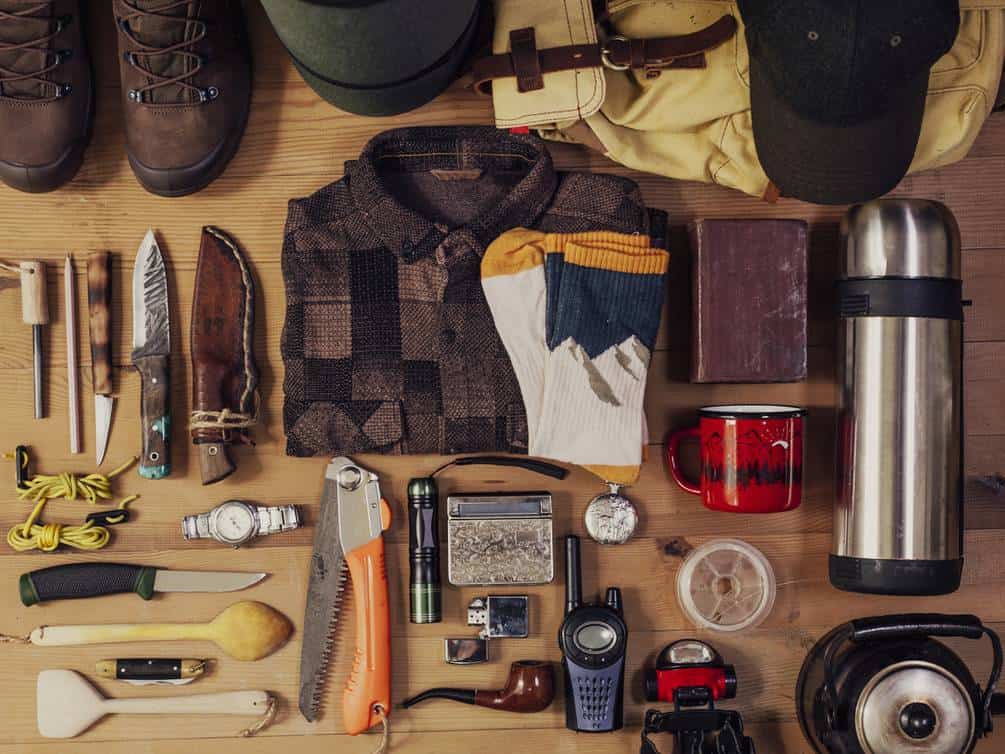
Venturing into the wilderness can feel daunting, especially when making your bushcraft gear list. A well-prepared kit is not a luxury but a necessity for survival in nature. This article provides an extensive and detailed guide on essential bushcraft gear, curated from various outdoor survival courses and expert advice.
Table of Contents
- The Modular Approach to Bushcraft Gear
- Bushcraft Survival Gear Tools
- Survival Gear for Firecraft
- Survival Gear for Shelter
- Bushcraft Clothing and Food
- Conclusion
- FAQ
- How do I organize my bushcraft gear?
- Which knife should I buy for bushcraft?
- Do I really need a headlamp for bushcraft?
- What’s the best way to make sure I can start a fire?
- Should I use a tent or a tarp for bushcraft?
- What should I put in my bushcraft first aid kit?
- What clothes do I need to pack for bushcraft?
- How can I make sure I have clean water while camping?
- What food should I bring for bushcraft camping?
- How do I avoid getting lost in the wilderness?
Key Takeaways
- Organizing your bushcraft gear into self-contained, interchangeable modules allows you to create a customized, efficient, and adaptable kit tailored to the specific needs of each outdoor adventure.
- A wilderness survival knife is crucial for various tasks, such as preparing food and creating shelter.
- Lamps, flashlights, and headlamps are essential for illumination in emergencies. Hunter Orange or safety vests can also provide reliable visibility and act as effective signal devices.
- Bags/packs designed specifically for bushcraft are essential for carrying necessary supplies while ensuring comfort during your outdoor adventure. These bags often contain survival kits with tools like paracord and first aid kits.
The Modular Approach to Bushcraft Gear
When assembling your bushcraft kit, it’s essential to think in terms of a modular system. This means organizing your gear into distinct, self-contained units that can be easily combined or separated depending on the needs of a particular trip. Here are some key benefits of a modular approach:
- Customization: With a modular system, you can tailor your gear to the specific requirements of each outing. For example, you might bring a more extensive shelter and cooking setup for a week-long trip in variable weather, but opt for a minimalist kit for an overnight stay in mild conditions. Modular gear allows you to add or remove components as needed without starting from scratch each time.
- Efficiency: A well-organized modular kit ensures that you have everything you need without carrying excess weight or bulk. By grouping related items together (e.g., fire-starting tools, water purification supplies, etc.), you can quickly access what you need without digging through a jumbled pack. This efficiency is especially important in bushcraft, where you may need to set up camp or respond to changing conditions quickly.
- Redundancy: A modular approach allows you to build in redundancy for critical gear categories. For example, you might include multiple fire-starting methods (matches, lighter, ferro rod) in case one fails or gets lost. By distributing these backups across different modules, you reduce the risk of losing all your options at once.
- Adaptability: Modular gear can be more easily shared or replaced as needed. If you’re traveling with a group, you can distribute modules among different packs to balance weight and ensure everyone has access to essential resources. If an item gets damaged or worn out, you can swap in a replacement without disrupting your entire kit.
To implement a modular approach, start by categorizing your gear into logical units like shelter, sleep systems, cooking, water, fire, tools, first aid, navigation, and so on. Within each category, select items that can work together as a self-sufficient subsystem. For example, your cooking module might include a stove, fuel, pot, utensils, and lighter. Use stuff sacks, pouches, or other organizers to keep each module contained and easily accessible within your pack.
By adopting a modular mindset, you can create a bushcraft kit that is efficient, adaptable, and tailored to your specific needs on any given adventure. This approach ensures you have the right tools and resources at hand without being weighed down by unnecessary extras.
Bushcraft Survival Gear Tools
This section will explore the essential survival gear tools needed for outdoor bushcraft.
Knives
A wilderness survival knife is a crucial piece of bushcraft gear for numerous survival tasks. It allows you to prepare food in multiple ways – from dressing game and skinning fish to slicing fruits.
With a trusty knife, creating makeshift shelters and crafting other indispensable tools become feasible in the wild. Furthermore, many experienced bushcrafters view knives as the ultimate survival tool, often taking precedence over any other equipment due to their versatility and indispensability outdoors.
Investing in a high-quality knife significantly boosts your chances of surviving an outdoor adventure by providing help with staying fed, hydrated, and sheltered in diverse scenarios.
The Hultafors Messer OK4 is a good choice. Get it at Amazon, or check it out on eBay. The upgrade choice would be a Morakniv Garberg: get it at Amazon, or check it out on eBay.
Here’s our list of the best bushcraft knives.
Illumination
Lamps, flashlights, and headlamps lead the pack regarding essential illumination tools for bushcraft. Their portability makes them a favorite among outdoor survival enthusiasts.
In addition, these tools are highly durable and resistant to harsh weather conditions. Some models offer long battery life or an alternative power source, making them reliable companions on bushcraft trips.
The visibility factor cannot be overlooked in emergencies either. Tools like Hunter Orange or safety vests provide reliable illumination even without batteries and double up as effective signal devices due to their high visibility colors.
Waterproof options add another layer of resilience, ensuring you won’t be left in the dark when rain hits your campsite.
I prefer headlamps to keep my hands free. Pick up a Black Diamond Spot 400 and you won’t be sorry. Get it at Amazon, or check it out on eBay.
Bags/Packs
Bags and packs play an essential role in outdoor survival situations. They’re more than a simple backpack; these specialized bushcraft gear carriers are often called “Get Home Safe Bags.” These are not your typical bags but rather durable, waterproof, and breathable ones that withstand the harshest conditions.
Survival kits within them provide quick access to tools like paracord, compasses, first aid kits, and even your foldable bushcraft knife. The versatility of such bags ensures you can carry ample supplies without sacrificing comfort during your bushcraft trip.
Other Survival Tools
Flint and steel, a knife, and a hatchet are essential outdoor survival tools. These tools serve multiple purposes: fire-making, carving, and splitting wood. In addition to these basic tools, it is essential to have other items in your gear list.
An axe can be useful for chopping larger pieces of firewood or building shelter. A saw is handy for cutting branches or logs into smaller pieces. And don’t forget a knife sharpener to keep your blades in top shape.
These additional survival tools will enhance your bushcraft skills and ensure you’re well-prepared for any wilderness adventure.
Survival Gear for Firecraft
To survive outdoors, having the right gear for firecraft is crucial. This section covers everything you need to know about starting a fire in the wilderness, from fire-making tools to fire starter kits.
So keep reading and make sure you’re prepared for any bushcraft adventure!
Starting A Fire
Fire-making is an essential skill for outdoor survival. Starting a fire is crucial in bushcraft because it provides warmth, light, and a means to cook food and purify water.
No matter the conditions, having the ability to start a fire can be a lifesaver. The Ultimate Bushcraft Gear List emphasizes the importance of firecraft in any wilderness situation.
Whether using traditional methods like rubbing sticks together or relying on modern tools such as waterproof matches or a fire starter kit, being prepared to make fire is essential when venturing into the great outdoors.
Survival Gear for Shelter
When it comes to shelter in the wilderness, a tarp or tent is essential for protection against the elements. A sleeping bag or space blanket will keep you warm during cold nights, while a fire starter kit ensures you can create warmth and cook food.
Don’t forget to pack a first aid kit and compass for added safety measures.
Tarp or Tent
Tents and tarps are important options for creating a shelter in survival situations. Tents offer the advantage of being easy to set up, durable, and providing better protection against the elements.
On the other hand, tarps are lightweight, compact, and versatile. They can make long-term shelters waterproof, although there may be a trade-off between durability and weight.
Ultralight sil-nylon tarps are available as well. The size of your tarp or tent will depend on your individual needs and preferences.
Sleeping Bag or Space Blanket
A sleeping bag or space blanket provides shelter and warmth in outdoor survival situations. While a sleeping bag offers insulation and comfort, a space blanket is a lighter alternative.
These blankets are made of lightweight, reflective material that helps retain body heat. However, opinions on their effectiveness vary. In addition to space blankets and sleeping bags, other options include bivy sacks, ultralight tarps, large plastic sheets, and wool blankets.
Each has its advantages depending on the specific situation.
Fire Starter Kit
A fire starter kit is a crucial component of any bushcraft gear list. It includes essential tools for starting a fire quickly and efficiently in survival situations. A fire starter kit typically consists of a lighter, matches, and a flint striker.
These items provide different options to ignite flames under various circumstances. For example, waterproof matches are ideal for starting fires even in wet conditions, while ferro rods can produce sparks that easily catch onto tinder.
A fire-starting paste is another option that can be used as an accelerant to quickly get the fire going. The ability to start a fire is vital for providing warmth, cooking food, boiling water, and signaling for help when needed most in the wilderness.
Thus, having a reliable fire starter kit should be prioritized by bushcraft enthusiasts and outdoor adventurers alike.
First Aid Kit
A first aid kit is a crucial item for any wilderness survival kit. It should be customized to meet your specific needs and preferences. You can easily build your first aid kit by purchasing bandages, gauze, medical tape, antiseptic wipes, antimicrobial cream, antihistamines, and pain relievers.
A well-stocked first aid kit is essential for addressing injuries and providing medical assistance during emergencies. This is especially important for beginners in the world of prepping.
Compass
A compass is a crucial piece of gear for outdoor survival. It helps you find your bearings and maintain a specific direction of travel, ensuring you don’t get lost in unfamiliar territory.
With a good orienteering compass, you can confidently navigate through dense forests or rugged terrains, increasing your chances of reaching safety. Whether on a bushcraft trip or facing an emergency, having a reliable compass can make all the difference in finding your way back home.
Don’t leave for the wilderness without it!
Bushcraft Clothing and Food
For bushcraft clothing, you’ll need essential items like headwear, shirts, jackets, pants, socks, boots, gloves, and a backpack.
Bushcraft Headwear, Shirt, Jacket, Pants, Socks, Boots, Gloves, Backpack
Regarding bushcraft clothing, choosing items suitable for outdoor survival is important. A baseball cap can provide shade and protect your face from the sun, while a waterproof jacket will keep you dry in wet weather.
Outdoor pants with reinforced knees are durable and can withstand rough terrain, and sturdy hiking boots provide support and grip. Don’t forget about layering – a wool pullover can provide warmth when temperatures drop.
Comfortable underwear and socks are essential for long hikes, while breathable shirts help regulate body temperature. Finally, a hat can shield your head from the elements. When selecting gear for bushcraft adventures, invest in a durable backpack that is spacious enough to carry all your essentials.
Canteen Kit
Canteen kits are a crucial part of any bushcraft camping outfit. These kits are designed to help you collect and purify water in outdoor survival situations. A typical canteen kit includes a metal canteen, filter, and a metal pot for boiling water.
Canteen kits are considered so essential that they are recommended gear for wilderness survival courses. One popular option is the Pathfinder Canteen Cooking Kit. So pack a reliable canteen kit before heading out on your next bushcraft trip!
Dry Food
Dry food is a must-have item for bushcraft and outdoor survival. It’s lightweight, easy to pack, and has a long shelf life. One recommended brand of dry food is Augason Farms Breakfast and Dinner Variety Pail, which contains various meals perfect for wilderness adventures.
By having a stockpile of dry food, you can ensure that you always have something to eat in case of emergencies or when you’re out exploring remote areas. Don’t forget to include dry food as part of your bushcraft gear list to keep yourself fueled during your outdoor excursions.
Fishing Line and Hooks
Fishing lines and hooks are essential tools for outdoor survival. They are recommended to be included in a wilderness survival kit, as they can be used to fish in nearby streams and provide a reliable means of harvesting food in a survival situation.
Fishing lines and hooks are part of the 10-item kit suggested for surviving alone in a wilderness setting. Including them in your clothing/apparel prepper gear is also advisable.
In scenarios like being stranded on a deserted island, fishing line and hooks become even more crucial equipment. So pack them along with other essential bushcraft gear for your next adventure!
Conclusion
Assembling the right bushcraft gear is a critical step in preparing for any wilderness adventure. By carefully selecting high-quality, reliable tools and equipment for tasks like fire-making, shelter-building, navigation, and food procurement, you can ensure that you have the resources needed to stay safe and thrive in the outdoors.
However, it’s important to remember that gear is only one part of the equation. Equally essential are the skills, knowledge, and mindset needed to effectively use these tools in a survival situation. Investing time in learning and practicing fundamental bushcraft techniques, such as fire-by-friction, natural shelter construction, and wild edible identification, will give you the confidence to tackle challenges and improvise solutions in the field.
As you build out your bushcraft kit, consider adopting a modular approach to organizing your gear. By grouping items into self-contained, interchangeable units based on function, you can create a customized, efficient, and adaptable kit that is tailored to the specific needs of each outing. This modular mindset will help you avoid carrying excess weight while ensuring you have the right tools at hand for any scenario.
Remember, the ultimate goal of bushcraft is not just to survive, but to thrive in the wilderness. By carefully selecting and mastering the use of essential gear, and cultivating a resourceful, self-reliant mindset, you can unlock a deeper connection with the natural world and find the confidence to face any outdoor challenge. So get out there, put your skills and gear to the test, and discover the profound rewards of a life lived close to nature.
FAQ
How do I organize my bushcraft gear?
The modular approach involves organizing gear into distinct, self-contained units that can be combined or separated based on trip needs. This system allows for customization, efficiency in packing, built-in redundancy for critical items, and easy sharing or replacement of components.
Which knife should I buy for bushcraft?
A wilderness survival knife should be versatile enough for multiple tasks, including food preparation, shelter building, and tool crafting. Look for a high-quality knife like the Hultafors Messer OK4 or Morakniv Garberg that can withstand outdoor conditions and maintain its edge.
Do I really need a headlamp for bushcraft?
Headlamps are particularly useful as they keep your hands free for tasks. Look for durable, weather-resistant options with long battery life. Consider carrying backup illumination like Hunter Orange or safety vests that can double as signal devices.
What’s the best way to make sure I can start a fire?
Include multiple fire-starting methods in your kit, such as waterproof matches, a lighter, and a ferro rod. Consider adding fire-starting paste as an accelerant. This redundancy ensures you can start fires in various weather conditions.
Should I use a tent or a tarp for bushcraft?
Choose between a tent or tarp based on your needs. Tents offer better protection and easy setup, while tarps are lighter and more versatile. Consider ultralight sil-nylon tarps for a balance between durability and weight.
What should I put in my bushcraft first aid kit?
Build a customized first aid kit with bandages, gauze, medical tape, antiseptic wipes, antimicrobial cream, antihistamines, and pain relievers. Ensure the kit addresses common wilderness injuries and meets your specific medical needs.
What clothes do I need to pack for bushcraft?
Include layered clothing with waterproof outerwear, reinforced pants, sturdy hiking boots, and weather-appropriate headwear. Focus on breathable materials and proper insulation. Don’t forget comfortable underwear and socks for long hikes.
How can I make sure I have clean water while camping?
Invest in a complete canteen kit that includes a metal canteen, water filter, and metal pot for boiling. The Pathfinder Canteen Cooking Kit is recommended for collecting and purifying water in survival situations.
What food should I bring for bushcraft camping?
Pack lightweight, long-shelf-life dry food options. Consider products like Augason Farms Breakfast and Dinner Variety Pail. Supplement with fishing gear (lines and hooks) for potential food procurement in the wild.
How do I avoid getting lost in the wilderness?
A reliable orienteering compass is essential for wilderness navigation. It helps maintain direction and prevents getting lost in unfamiliar terrain. This tool can be crucial for finding your way back to safety in emergencies.
Is this more natural and accessible to general readers?







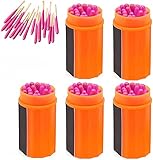




















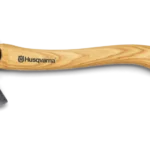



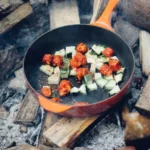
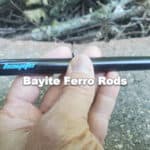
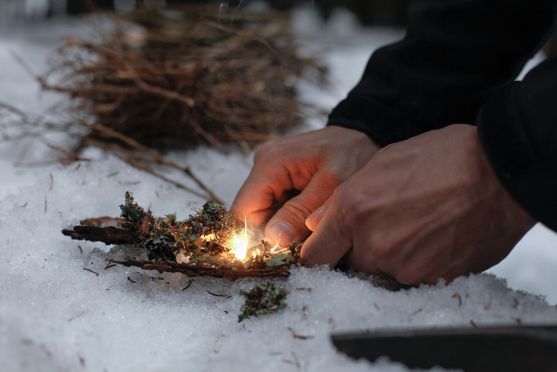
Leave a Reply